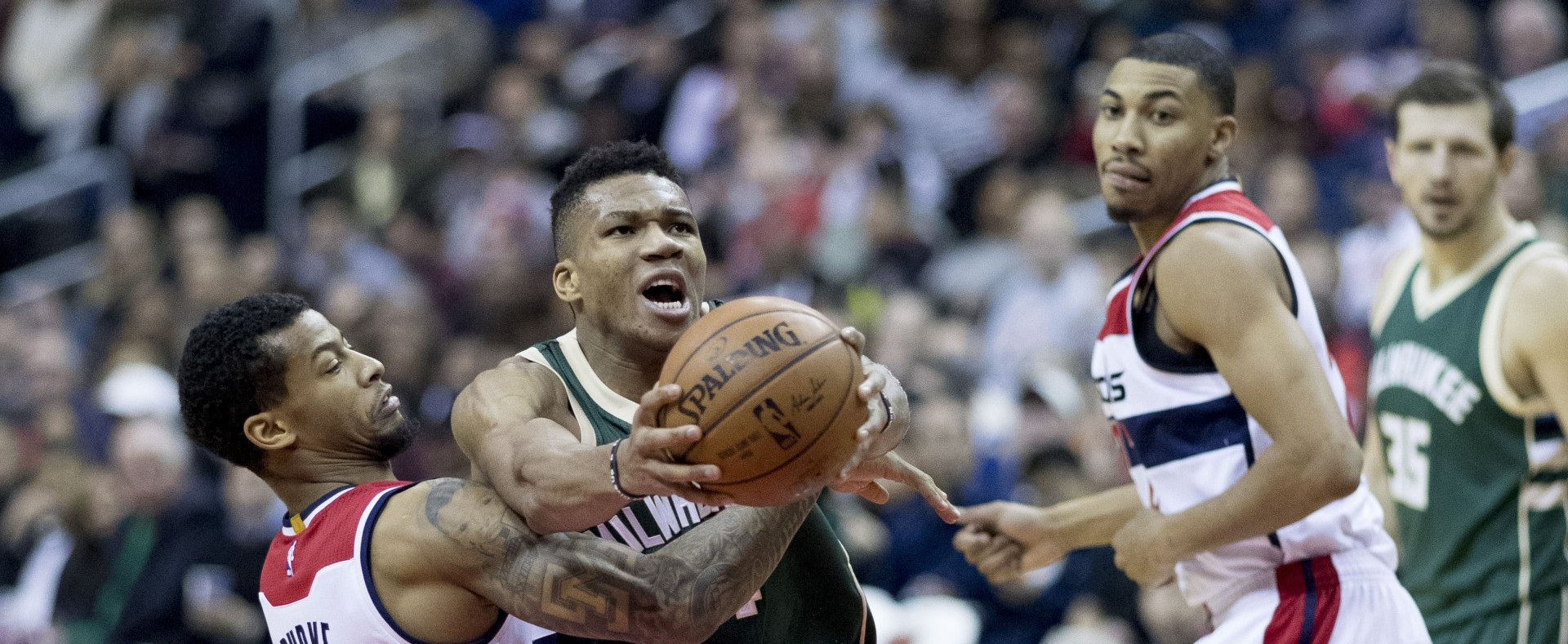The Loneliest Center (aka- My Name Is Jonas)
NBA DFS Analytics Master Class #3– “The Loneliest Center (aka- My Name Is Jonas)”
If I’ve done nothing but put the opening track from the Weezer masterpiece album in your head for the rest of the day, you’ve already taken tremendous value from this piece. But I’m going to stick with my original title- “The Loneliest Center.” Jonas Valanciunas probably isn’t really lonely. When you’re a 7-foot NBA player hitting up the most lit of Lithuanian clubs while nursing your Red Bull Wodkas, you’ll draw plenty of attention. Now, maybe there’s something to that ‘lonely in a crowd’ type of vibe, but this isn’t philosophy class. While Jonas no doubt gets plenty of adoration when gallivanting around Vilnius in his Friday night satin shirts, he doesn’t get attention from the one place he most desires it- your DFS roster. And you’re making a big mistake.
(Note: The numbers used for today’s piece are from DraftKings)
Let’s start with the basics- we consider 6.0x value to be a good return on your GPP investment on DraftKings. This would put you solidly into the cash most nights- even close to winning on some slates. Accordingly, 6.5x is an elite finish. On a fair number of nights it’s enough to take down a GPP, and even if not, you’re likely way into the green. These are good measuring sticks for how well certain picks help us win the (big) money.
Over the last two seasons, there are 40 players who have started at least 50 games being center-eligible on the main DK slate, and had an average salary of at least $5,000. Let’s look at how often Jonas Valanciunas was helpful in hitting our target goals on nights when he was a starting center:
| Player |
6.0x Value |
6.5x Value |
Overall Avg Value |
Games |
Avg DK Salary |
| Jonas Valanciunas |
37.5% |
27.3% |
5.4 |
88 |
$6,599 |
“Ummm, is that good?” you timidly ask. First- perhaps it’s a flaw in your DFS acumen that you’re not quite sure how often players SHOULD hit value, so maybe have some biases about what good or bad performance looks like. But that’s beyond the scope of this article, so let’s just compare to a few other starting center-eligible players in roughly the same price range (games where player was center-eligible and in starting lineup):
| Player |
6.0x Value |
6.5x Value |
Games |
Avg DK Salary |
| Jonas Valanciunas |
37.5% |
27.3% |
88 |
$6,599 |
| Hassan Whiteside |
30.7% |
18.4% |
114 |
$7,613 |
| Steven Adams |
29.5% |
17.4% |
134 |
$6,331 |
| Tristan Thompson |
27.4% |
19.0% |
84 |
$6,048 |
| Clint Capela |
27.2% |
17.5% |
103 |
$7,450 |
| Kevin Love |
24.5% |
17.0% |
53 |
$7,619 |
| John Collins |
23.3% |
19.8% |
86 |
$7,530 |
| Rudy Gobert |
20.9% |
12.2% |
139 |
$8,037 |
If you needed either a DraftKings center or someone to get you in to Vilnius hotspots without paying a cover, Jonas Valanciunas was an absolutely top-end option . So why was Jonas so lonely, then? Let’s look at the same chart again, with main-slate ownership attached:
| Player |
6.0x Value |
6.5x Value |
Games |
Avg DK Salary |
Avg GPP Ownership |
| Jonas Valanciunas |
37.5% |
27.3% |
88 |
$6,599 |
10.6% |
| Hassan Whiteside |
30.7% |
18.4% |
114 |
$7,613 |
13.2% |
| Steven Adams |
29.5% |
17.4% |
134 |
$6,331 |
7.9% |
| Tristan Thompson |
27.4% |
19.0% |
84 |
$6,048 |
8.7% |
| Clint Capela |
27.2% |
17.5% |
103 |
$7,450 |
12.4% |
| Kevin Love |
24.5% |
17.0% |
53 |
$7,619 |
10.9% |
| John Collins |
23.3% |
19.8% |
86 |
$7,530 |
12.6% |
| Rudy Gobert |
20.9% |
12.2% |
139 |
$8,037 |
7.9% |
It’s like a DFS version of Blues Clues, and your notebook finally makes sense! Jonas was lonely because there were so many other center-eligible players that you rostered instead of him, even though he was loading you up with top-shelf Wodka night after night ! But you continued your dalliances with your Clint Capelas, your Tristan Thompsons, and even your ghastly Rudy Goberts. Jonas is disappointed in you, and you he’s even kicked you out of the WhatsApp group.
Why did you miss on Jonas time after time in favor of inferior options, even though he was one of the best DK center choices by some margin? That’s more of a question to ask yourself. However, looking at the data, I can at least venture a guess- in addition to those moonshooter games, Jonas also had some real duds. The duds often came after a moonshooter game. I reckon the public most often ‘chased’ Jonas’ good games only to be disappointed, and after getting burned a few times, developed some bias against him. But that’s just a theory, and you’re certainly welcome to comment with your own.
One reasonable discussion to be had is whether past is prologue- will these same players have these same splits in the coming season with new teams/teammates? There are two key takeaways (well, maybe more) out of this article- the first is that it’s worth revisiting these scenarios after the first 20-30 games for these players. Many player-specific trends will continue to be applicable, and if you find confirmation, you have a big edge on the field. But secondly, whether they do or don’t continue for these specific players, you can be rest assured that SOMEONE – or actually many someones since I just picked one player for this article out of many others who also fit the bill- will follow this same formula. They’ll produce a high percentage of GPP-winning value, but will be owned at the same percentage of many inferior options. Your optimizer might not know this- but now you do. Historical analysis is so critical because it teaches you how to think and what kind of valuable information to be looking for .
Well- I hope you’ve enjoyed this edition of NBA Analytics Master Class. Happy to hear any feedback/questions. I’m certainly not giving away all I know, so find true value by picking up the ULTIMATE Dataset for yourself.
Learn the Game. Beat the Game. Thanks for reading!
The primary purpose of this website is to offer you the data to find your own valuable insights. Therefore, do not expect these insights to be regularly updated- this is not a DFS tout site. However, these articles demonstrate the incredible value made possible by analyzing the data in the right way and creating an informed decision-making process
Share This Insight:


